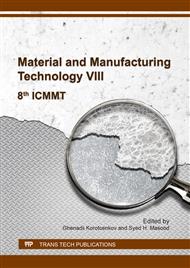p.135
p.141
p.148
p.155
p.165
p.172
p.177
p.182
p.187
Viscoelastic Materials: Innovation and Development Countenance
Abstract:
While performance and durability are the key features of any Material behavior, the greater the elasticity and flexibility ability the better the functioning capabilities. These Material functioning capabilities not only include improved Load Bearing Capacity (LBC), but also enhanced stress and strain abilities. In addition, these functioning capabilities are dependent on composition of the material, Total Load (TL) and Design specification requirements. A key mechanical behavior of materials is their Viscoelastic ability. While Viscous materials are objects that become deformed via shear and tensile stresses, elastic materials are those that change their shape under stress and strain. Furthermore, Viscoelastic materials are those which portray both elastic characteristics as well as viscous behavior when enduring deformation. This Viscoelastic ability is a critical factor for materials to be effectively Total Load (TL) resistant. Accordingly, this paper will discuss some of the more important Material innovation, and development countenances such as functionality to further demonstrate the overall Viscoelastic behavior.
Info:
Periodical:
Pages:
165-171
Citation:
Online since:
October 2017
Authors:
Price:
Сopyright:
© 2017 Trans Tech Publications Ltd. All Rights Reserved
Share:
Citation:


